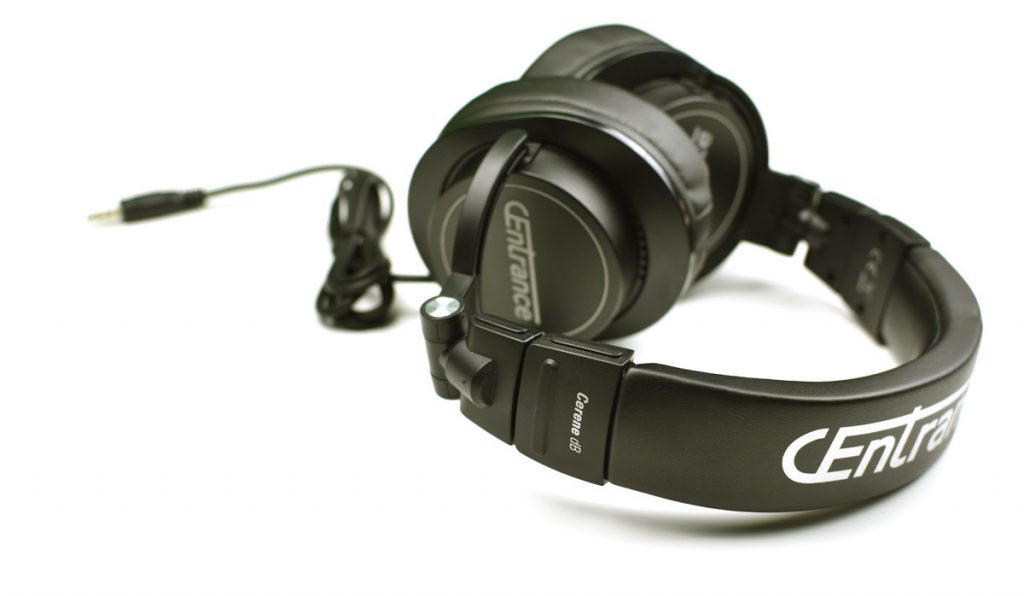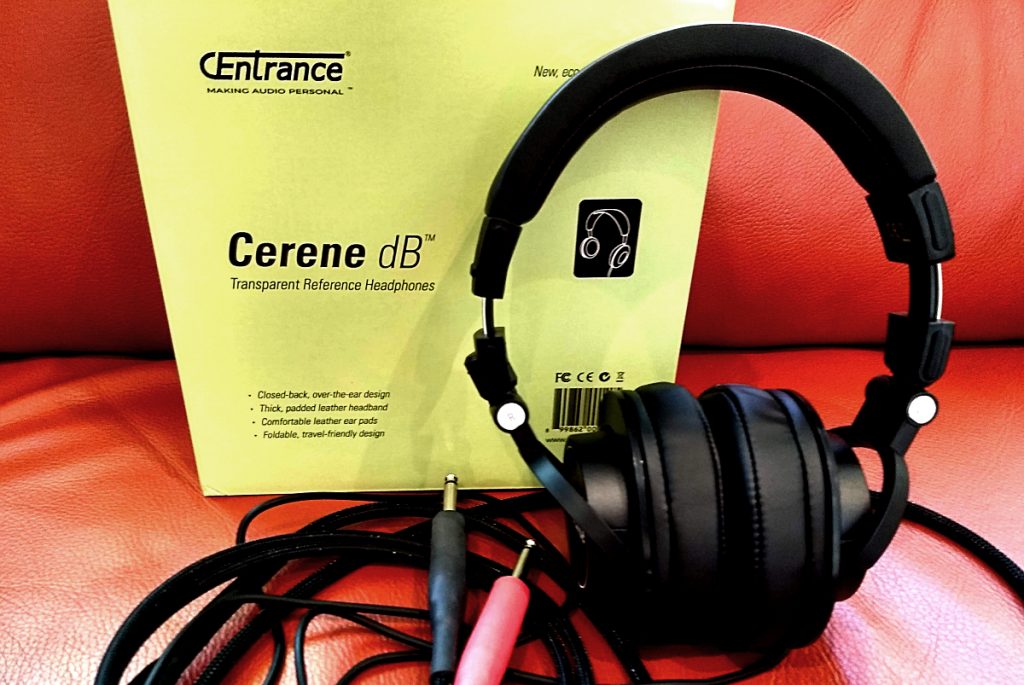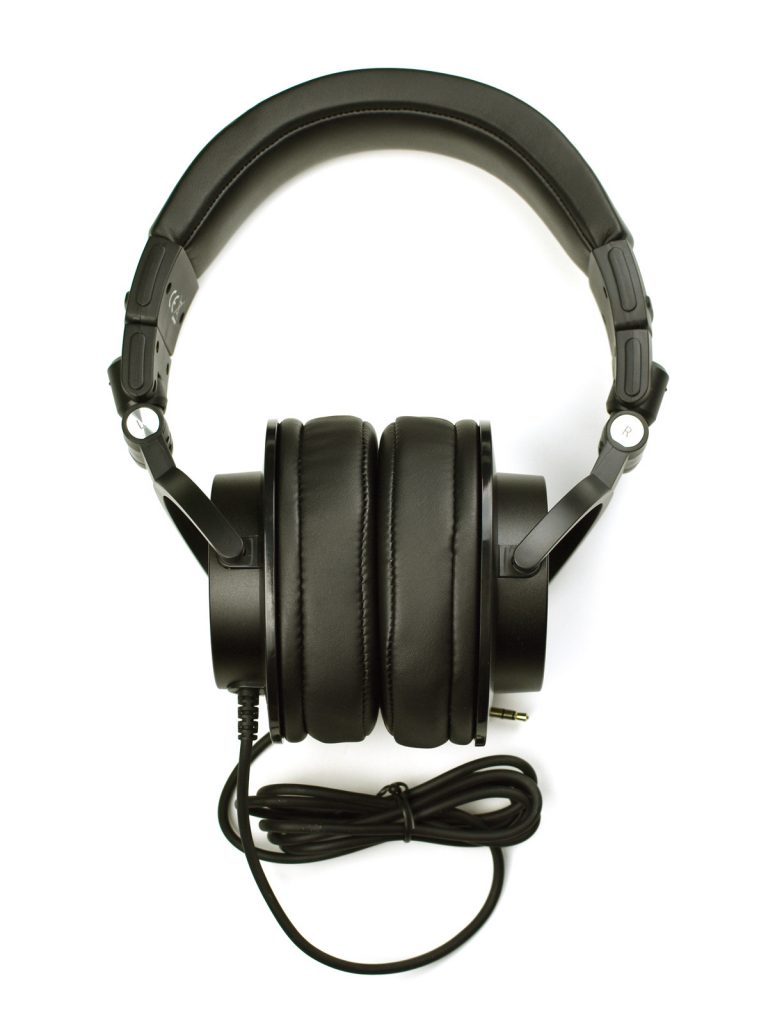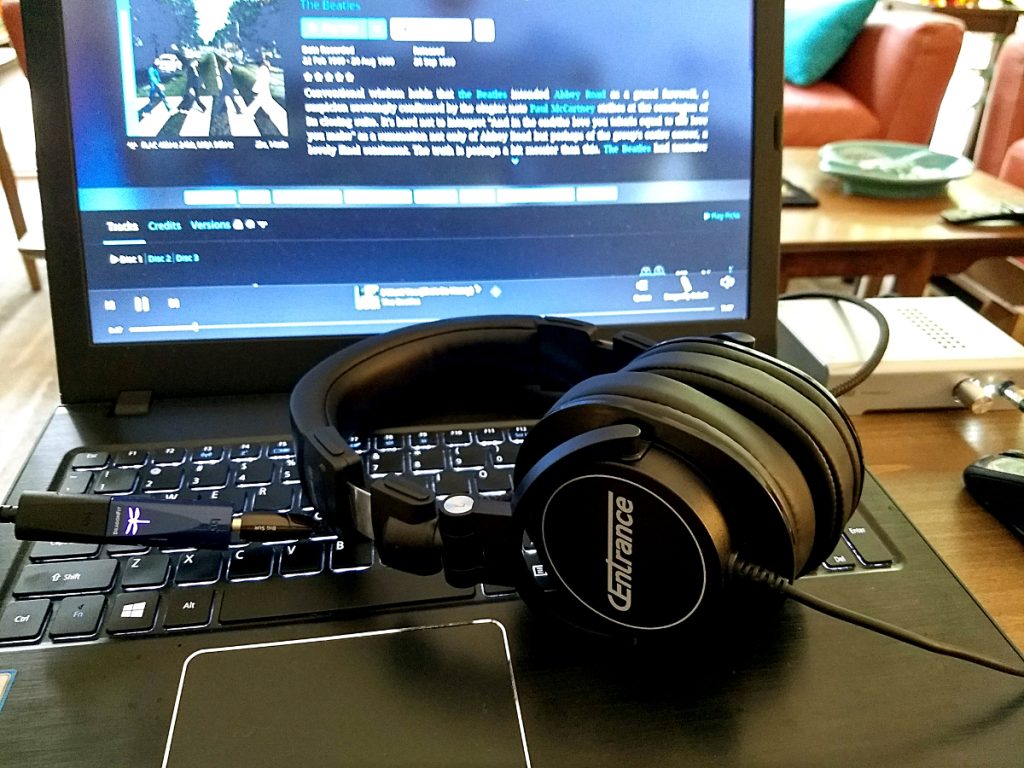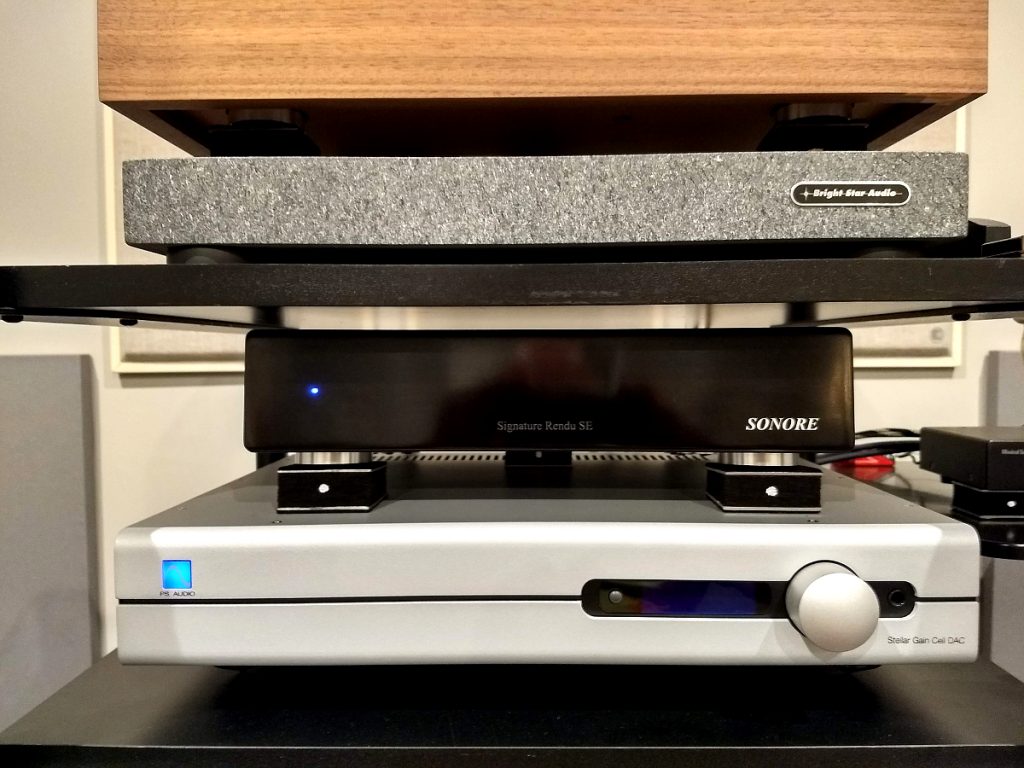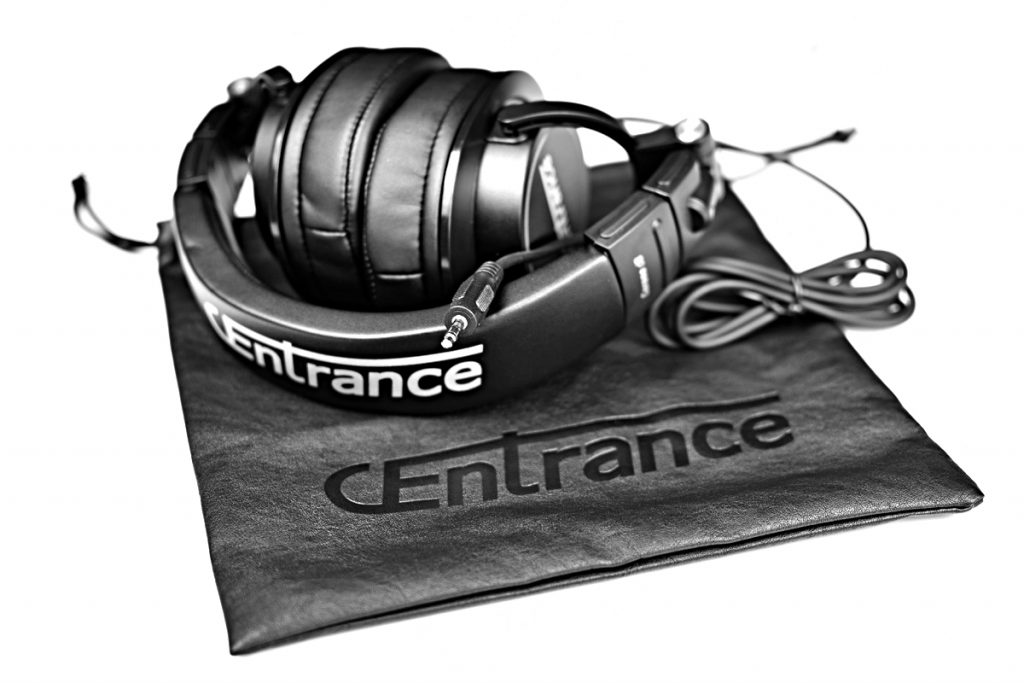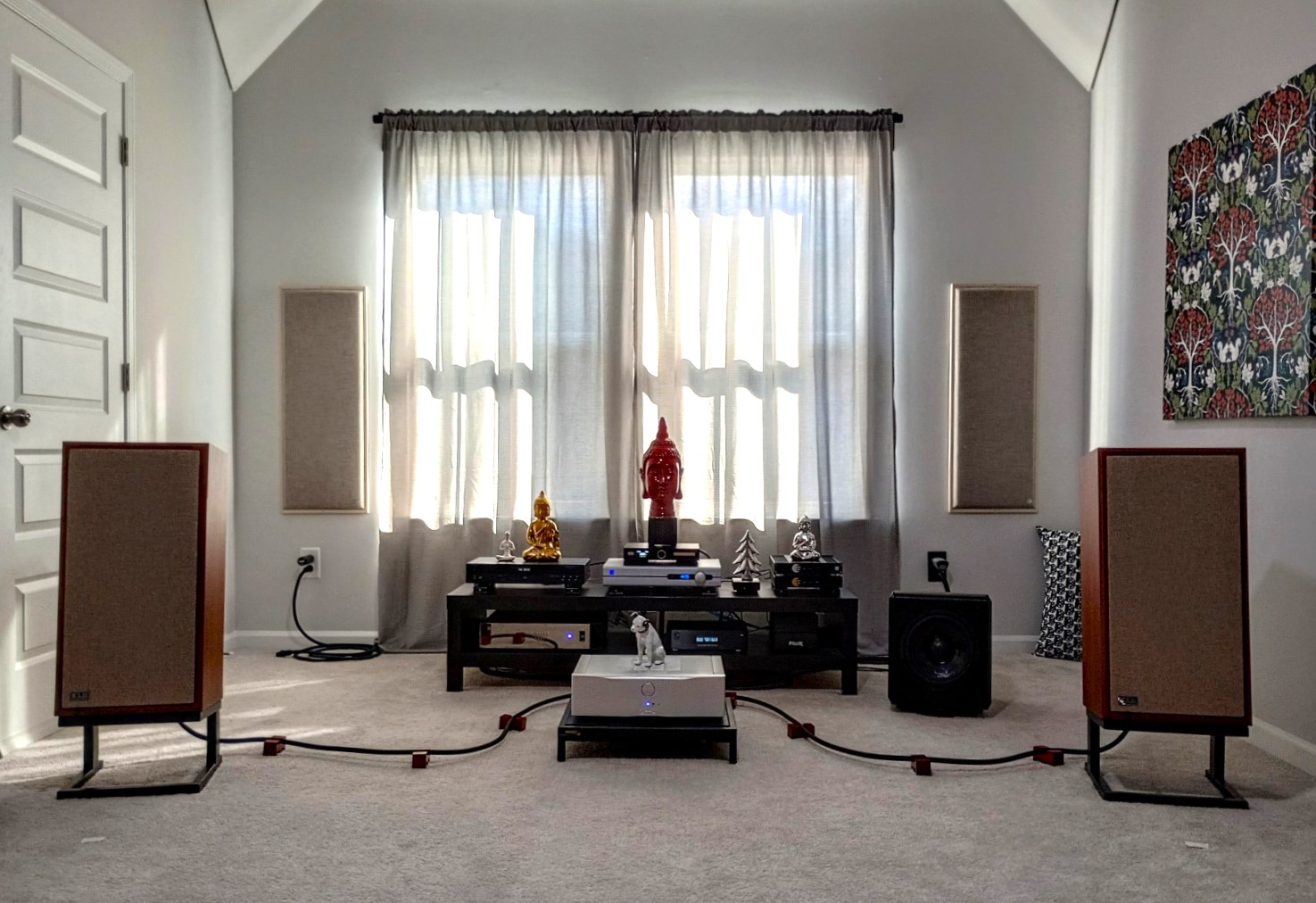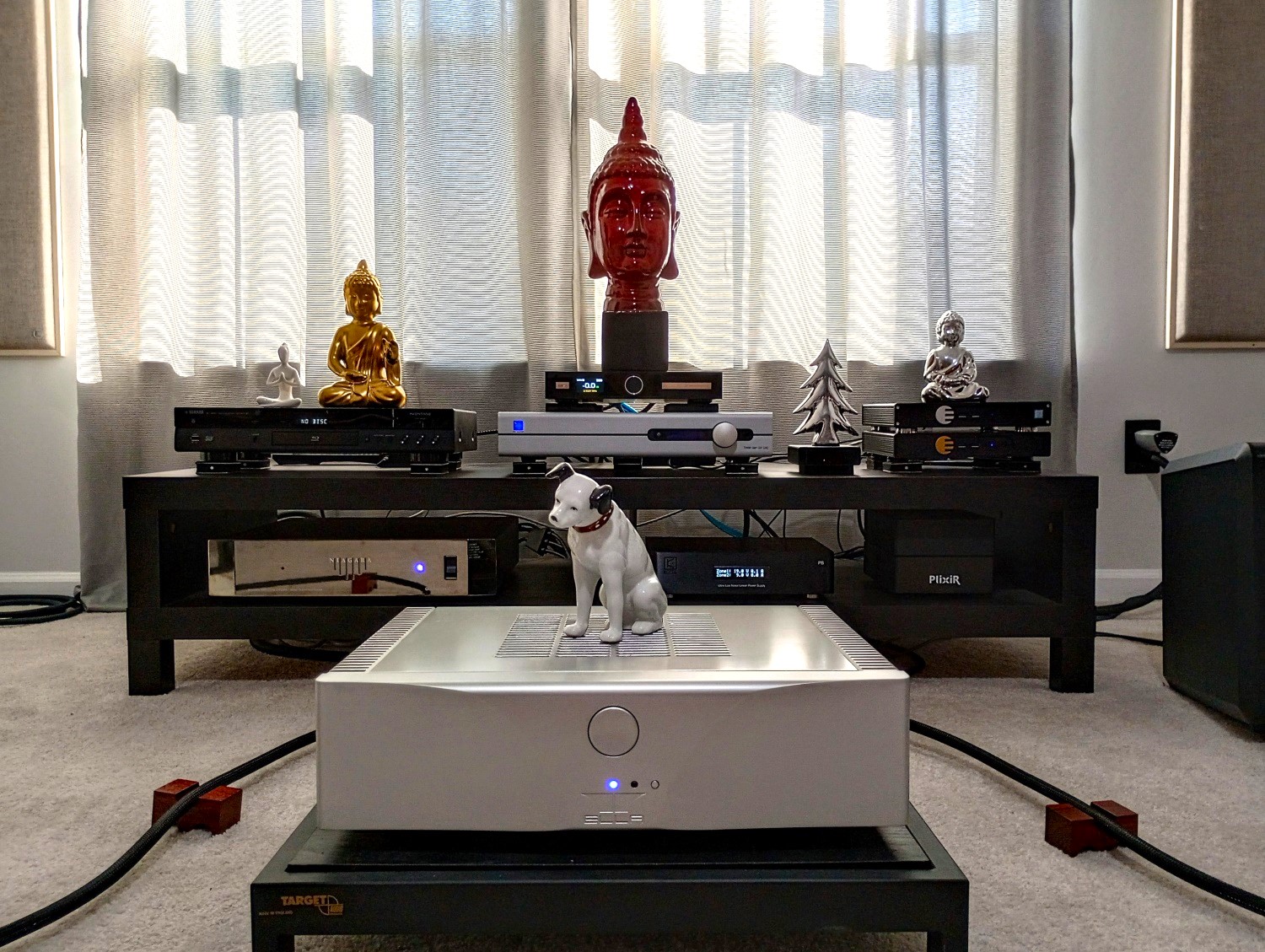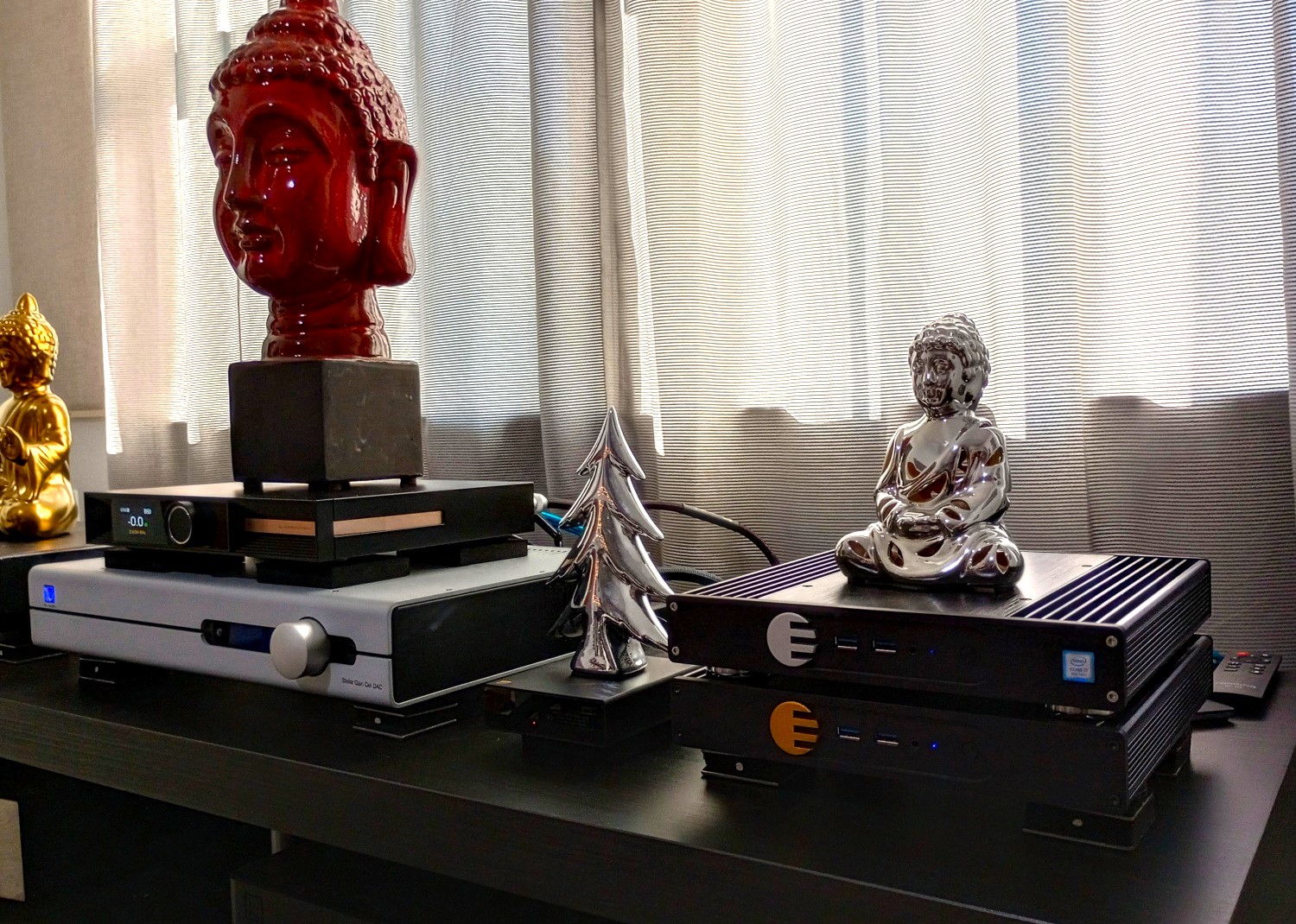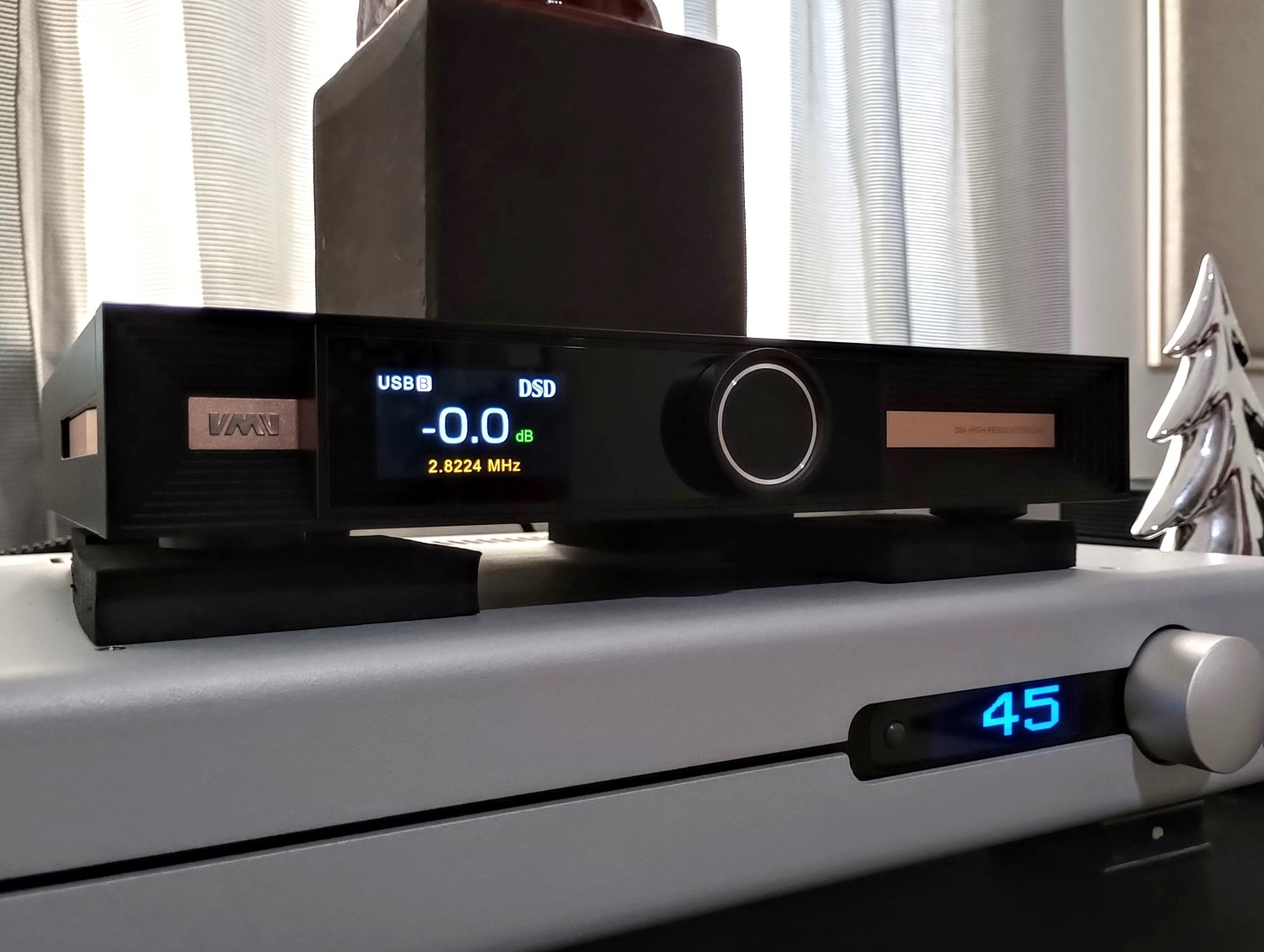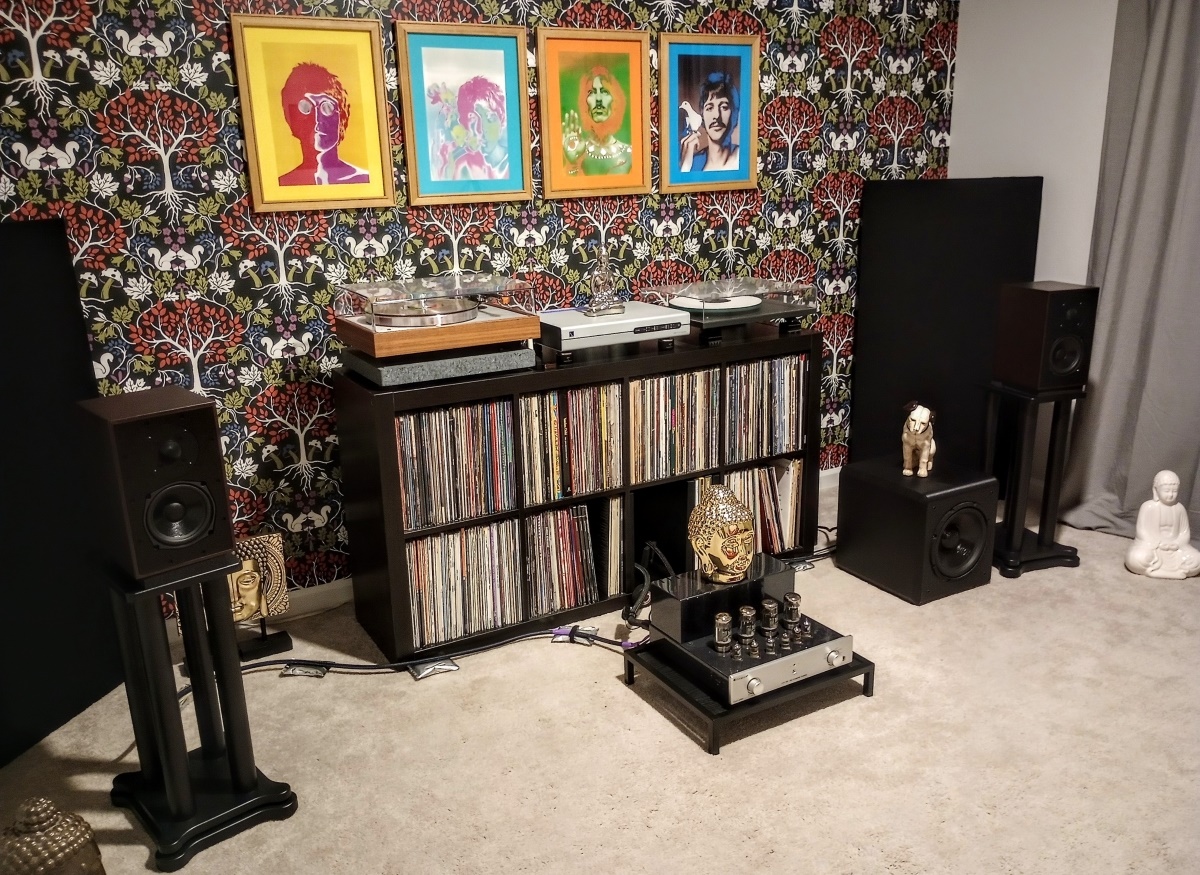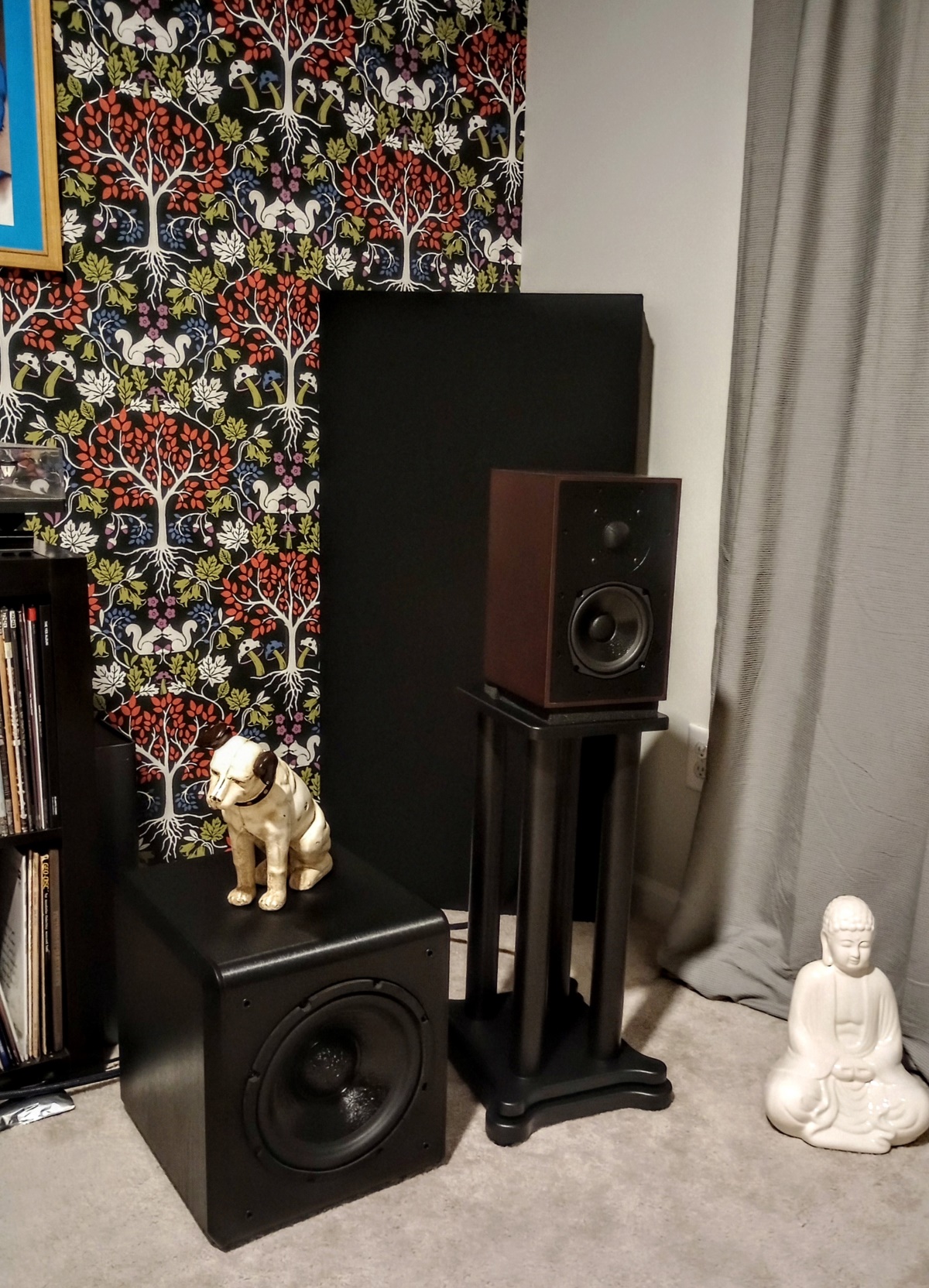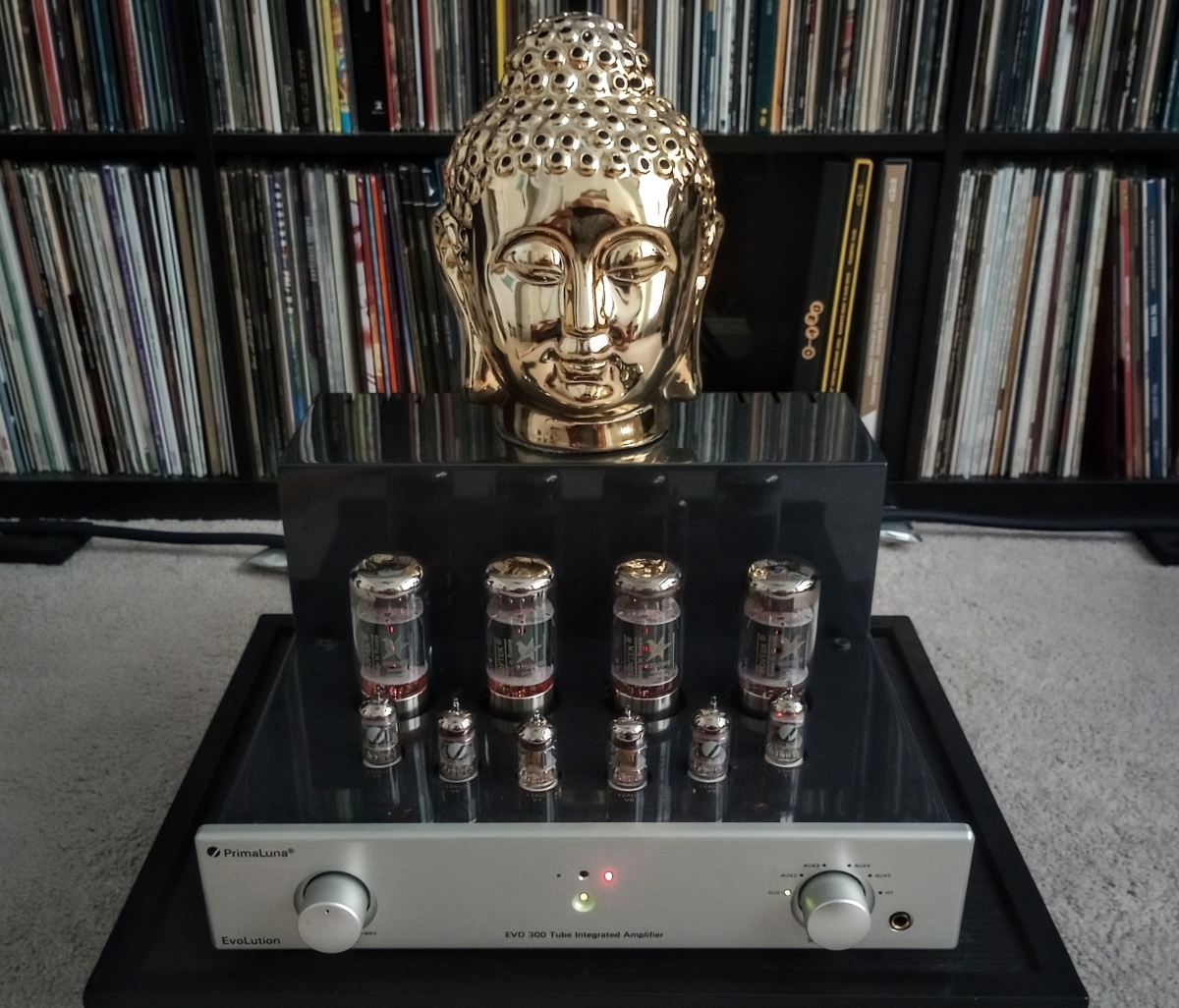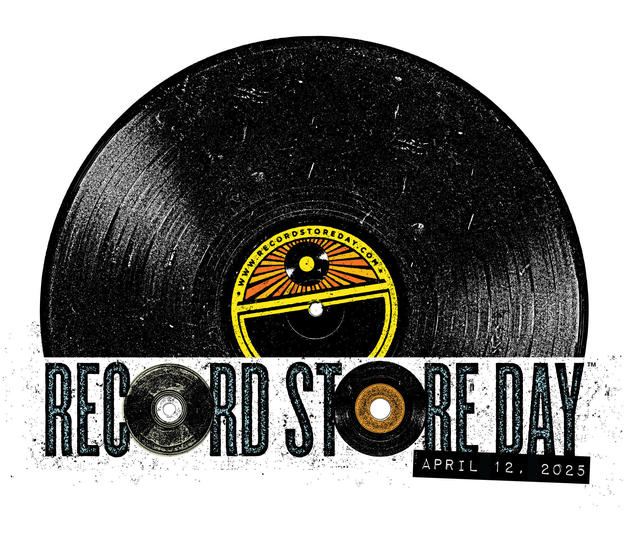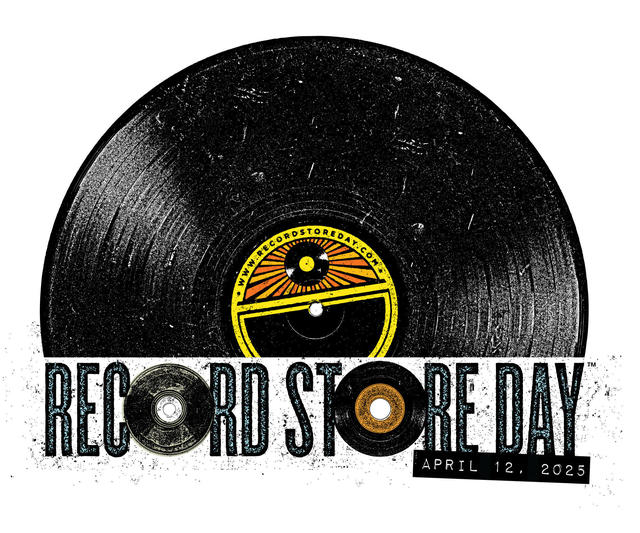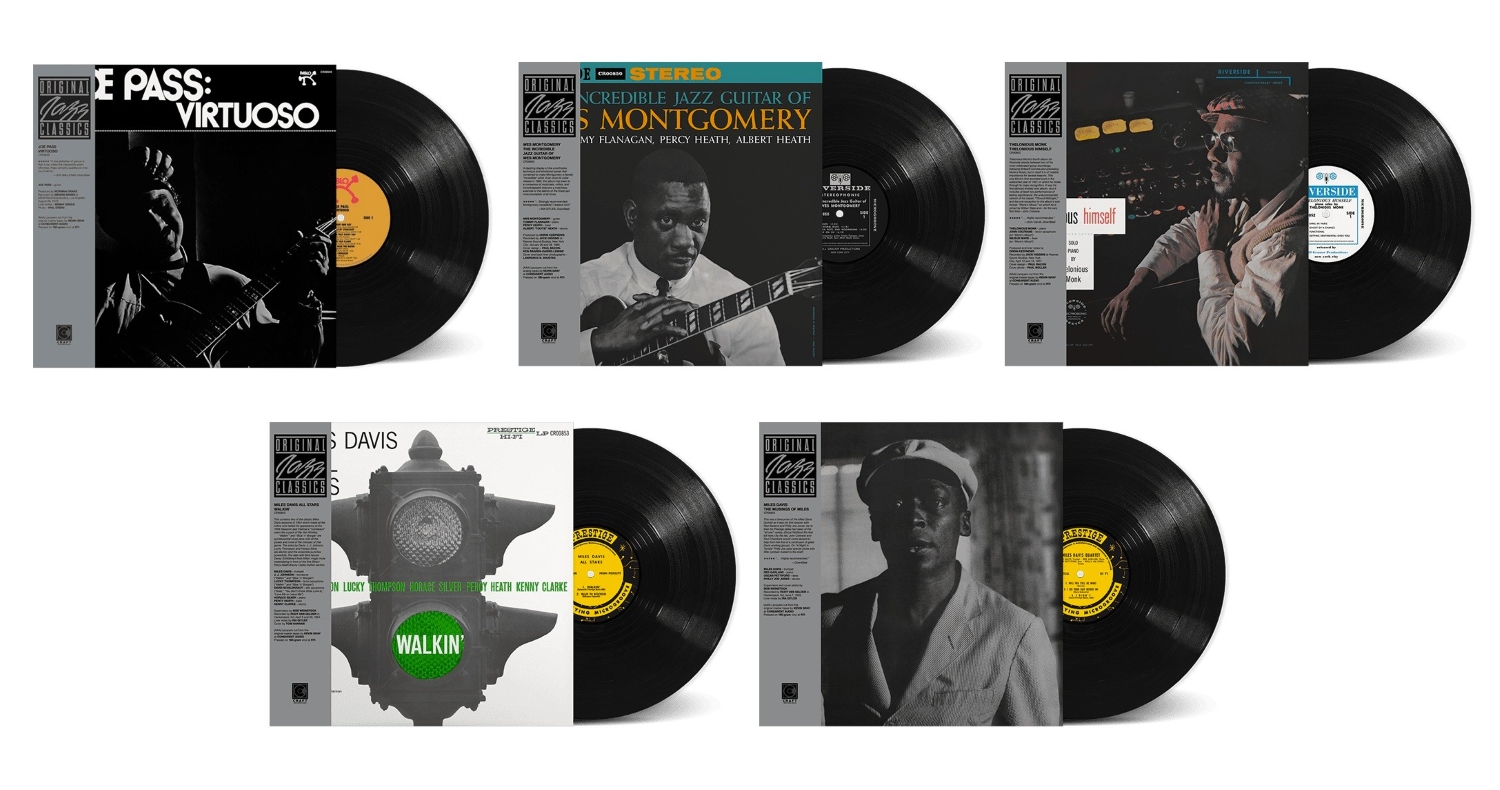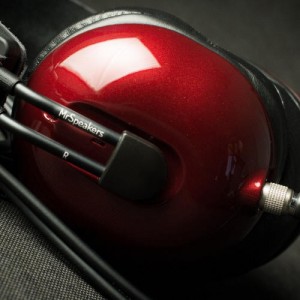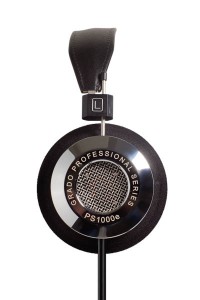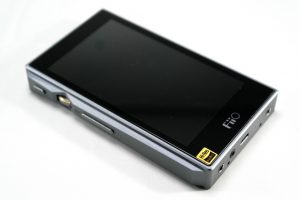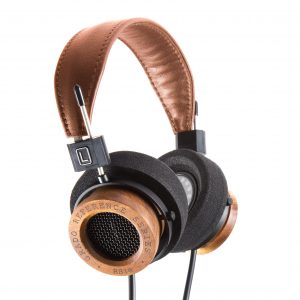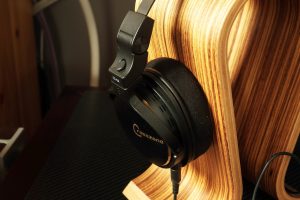I've owned a number of decent headphones over the course of my life as an audiophile, and I always generally have a couple of pairs on hand. Mostly for listening when my wife, Beth, has control of the television and has landed on HGTV or some insanely sick horror flick that I could care less about. Or when I'm writing music reviews, where I've decided to make an attempt at engaging by at least being present in the same room as Beth, rather than segregating myself down to the listening room. I'm no spring chicken, and my hearing is no longer perfect; I've got a touch of tinnitus that thankfully comes and goes—mostly, it stays gone. And I do prefer the sound of loudspeakers in my listening room environment that, for me at least, tends to mostly ameliorate any inconsistencies in my hearing.
I'd only just finished my review of the glorious ampsandsound Leeloo monoblock, single-ended triode tube amplifiers (you're welcome to check out that review HERE), which at their posted specification of 3 watts per channel are designed to provide exceptional listening with either headphones or very highly efficient loudspeakers. My goal for that evaluation was mainly to explore the Leeloos ability to drive both my Zu Audio and Klipsch loudspeakers—which they did swimmingly. Serious cash ($5500) for the pair, but nonetheless, very highly recommended. Again, I had no real intent to evaluate their use as a pair of headphone amps, which—at their listed MSRP—struck me as more than just a little….bourgeoisie.
Until a recent email from Michael Goodman at Centrance got my attention. Centrance is unusual among high-end manufacturers, in that the majority of their business is aimed at Pro-Audio users, typically for use in recording studios or by professional musicians. But they also build products that are definitely aimed at audiophiles; they've made the cover of Stereophile a couple of times over the last five years or so with DACs and preamps that are just as comfortable in the home as in a professional environment. Centrance was introducing a new pro headphone, the Cerene dBs, which their press release touted as being "a transparent reference for professionals and audiophiles." They appeared to be well-built, with full-size, over-the-ear leather earpads, and are also foldable and easily transportable. Hey, I just happen to have the perfect set of absolutely world class headphone amps on hand—why not take a listen? I let Michael know I was definitely all in.
The Cerene dBs arrive
The Cerene dBs arrived over the weekend; they appear to be exceptionally well-made, with the fit and finish of a perfectionist pair of professional cans that look and feel way more expensive than their $179 MSRP would suggest. At first glance, I noticed that the connection cord only sported a 3.5mm headphone jack; I pilfered through the box to make certain that I hadn't missed the adapter somewhere—none to be found. No worries, I know I have one somewhere here! And the tube amps required a special cable for headphone listening that hadn't arrived yet, so I listened to the Cerene dBs for a couple of days using the new AudioQuest DragonFly Cobalt USB DAC (full review forthcoming) that had also just shown up. Mostly listening with Roon via my laptop to get an idea of how the Cerene dBs sounded. I was immediately struck by the extreme comfort and lack of fatigue during extended listening sessions. They sounded very good, with a neutral presentation that offered much less of that "music inside your head" effect that so many phones seem to overemphasize. Meanwhile, the needed cable arrived from ampsandsound; now for the real test!
A relatively new product that only just started shipping to the general public, the Cerene dBs came with no posted specifications. Online, I was able to determine that their impedance was rated at 40 ohms, so I used the ampsandsound Leeloos' Low-Z headphone taps (rated at 32 ohms) for all my listening tests. The Y-connection cable that came for the amp pair utilized two standard ¼ inch headphone jacks (one for each channel) on one end, connected by about six feet of very high-quality looking cable to a single standard ¼ inch input connector at the other end. Plenty of length for you to kick back in your favorite chair for some comfortable listening. Would owning a pair of $5500 headphone amps make a difference in my listening enjoyment?
After a bit of a side trip to Guitar Center to acquire the needed ¼ inch adapter, I can answer that with an unequivocal yes! When I wrote the above comments about my possibly declining hearing, that was mostly based on my recent personal experience and self-assessment. But also on my listening experience with a new, but very high quality pair of headphones (the Cerene dBs), with a highly regarded portable DAC/headphone amp (the AudioQuest DragonFly Cobalt)—where not everything seemed completely perfect. I have years of experience with the AudioQuest DragonFly family of products, and generally, they're excellent performers—especially at their relatively meager (sub-$300) price point. It only took five minutes with the Leeloos and the Cerene dBs for me to realize that my ears are in much better shape than I might give them credit for! The Leeloos lifted these relatively inexpensive headphones to an impressive level of performance that has already greatly elevated my overall estimation of their value.
Of course, you really have to take into consideration that: a) I'm listening to the Cerene dBs through a $5500 pair of SET tube amps; and, b) I'm listening through a $5500 streamer/DAC combination (PS Audio Gain Cell DAC with Sonore Signature Rendu SE Optical Streamer). This still gives me pause to want to perform a much more thorough evaluation of the new DragonFly Cobalt, though it's obviously not exactly apples-to-apples to compare results obtained from a $300 DAC/headphone amp compared to the $11,000 setup involving the Leeloos. Through the Cobalt the sound was, well….pretty pedestrian in comparison.
Through the Leeloos, the sound took on an effortlessness and clarity that simply shocked me with its goodness. I generally have several headphone amps available here, but I just wasn't prepared for the quantum leap in performance that the Leeloos brought to the table. In my relatively meager frame of reference, the $179 Cerene dBs are superbly performing headphones. But I'm certain that anyone considering spending $5500 for a pair of single ended triode headphone amps will most likely be using them with a pair of cost-no-object cans—duh! My truth, though, is with the Leeloos, the sound quality of the Cerene dBs was undeniably the finest professional monitor headphone sound I've ever experienced. I listened for days to a wide variety of music from every corner of the audio spectrum; everything I listened to was delivered with power, finesse, liquidity, and truly palpable realism. And listener fatigue was a non-issue here. Listening to the Cerene dBs with the Leeloos was an almost otherworldly experience—they performed far beyond their $200 MSRP, producing magnificently seductive sound that simply begged for extended listening sessions!
Additional listening
I mentioned above what I perceived as an issue with the AudioQuest DragonFly Cobalt unit; truthfully, initially, I suspected that the problem might actually lie with the Cerene dBs, and was justly concerned going forward into the review. However, not really having any history of extensive use with either, I felt it would be prudent to take the time to try and narrow down the culprit. Five minutes with the Cerene dBs and the ampsandsound Leeloos convinced me beyond doubt that there was no problem with the headphones! There does definitely appear to be an issue with the internal volume control of the DragonFly Cobalt—there seems to be a mismatch between the left and right channels, or perhaps a short of some sort, and that was made abundantly clear by the Cerene dBs. I've since discovered that setting the DragonFly's volume to "Fixed Volume" in Roon's audio settings eliminates any problem with the Cobalt's ability to function as a DAC with other headphone amps via my laptop. Fixed Volume allows you to control volume using your headphone amplifier volume control. It was now much easier for me to comfortably judge how the Cerene dBs would behave with less exotic headphone amplifiers.
The Leeloos were already packed and on their way back to Southern California, but I really wanted to experience the Cerene dBs with equipment that's much more within the means of the average audiophile. After the DragonFly Cobalt volume control debacle was solved, I decided to bring home the Schitt Magni (first generation) headphone amp I've been using mostly at the office for about five years. The Magni has been updated since its original release; the newer version has slightly more power and an additional set of analog outputs to allow its use as a preamp if desired. But the basic circuit design is the same, and my original is a truly great-sounding headphone amp for only $99 that I only stopped using at home a couple of years ago when I started listening with the headphone section of my new PS Audio Gain Cell DAC/Preamp. With the Magni connected to the DragonFly Cobalt, there were now no further technical issues. And the sound quality playing through the Cerene dBs was surprisingly very good! The Magni didn't quite have the available volume, muscularity, and brute force power (a term I never envisioned applying to tube electronics!) possessed by the Leeloos, and tended to run out of gas if pushed too hard. But it was perfectly within the acceptable range for most everything I listened to. And the overall sound had amazing body and warmth that was totally unexpected from a $99 headphone amplifier.
Listening to the Cerene dBs through the headphone section of my PS Audio Gain Cell DAC/Preamp is also surprisingly good, and since it's part of the big system, you also get the bonus of listening through the Sonore Signature Rendu SE Optical. Which is a bit more of an apples-to-apples comparison to listening to the Cerene dBs through the Leeloos. The Gain Cell DAC did not disappoint—there's limitless volume, and while the lushness and effortlessness of the Leeloos wasn't quite as much in evidence with the PS Audio device, it was nonetheless a completely thrilling experience. The Cerene dBs responded with superb realism and musicality, and always offered a compelling and fully enjoyable listening experience.
Minor distractions
I did have a couple of minor construction quibbles with the Cerene dBs. First and foremost, I felt the length of the cord was a bit short at the 1.5 meters as supplied. While Centrance describes the cord length in their literature as "perfect length for desktop and portable use"—and they are essentially correct with regard to portable use—for desktop and more relaxed, audiophile listening, I would have liked a couple of extra feet of cord length. My work desktop environment is so crammed with equipment, and I'm constantly rolling back and forth between two 32" monitor setups, so an extra couple of feet would make all the difference in the world in terms of my convenient location for my headphone amp. When I'm sitting at my laptop in my living room, with a front-panel jack headphone amp directly in front of me, it's basically fine. I did try an older tube headphone amp (Rolls Bellari) that only had a rear-panel jack, and the cord length then was a bit tight, even when sitting at the laptop. The Rolls is getting a little long-in-the-tooth (15 years), and was more than just a bit noisy, so I decided not to use it for evaluation purposes.
My one other minor issue is the lack of a supplied 3.5mm to ¼ inch adapter for the jack end of the cable (one is available for purchase). While I realize that many portables only include the option of a 3.5mm input jack, the Cerene dBs scream to me that they'll be just as comfortable in a professional or audiophile environment, where ¼ inch jacks are mostly still the norm. Despite the fact that I've been in my new house for two-plus years, I still haven't unpacked everything, and I was unable to locate the appropriate adapter. Which forced me to drive down to the local Guitar Center (only place in town that seemed to have one!) and pay $10 for an adapter that ought to sell for half that price. Not a huge deal, but surprising for a product with professional and audiophile aspirations.
Which brings me to one last point, and this is simply an observation and not a complaint. Although I've found this mostly to be true of many over-the-ear headphones (especially at this price point) I've ever had experience with: when listening at reference levels, they transmit a fairly substantial amount of sound energy into the room you're occupying. My recent (over the last year or so) headphone use has been mostly limited to IEMs, particularly from Fiio (the really excellent quad-driver FA-7s), and they do not transmit any sound other than into your ear canal. Upon my first listen to the Cerene dBs at the laptop, my wife's comment was, "Well, I like those headphones a lot less than some of the others you've had." When I inquired as to why, she let me know that they were too loud and interfered with her ability to easily hear the television. For listening at my normal chair in the listening room, there was no problem, and I didn't feel any vibrations of the earcups or any coloration of the sound while listening—which for me is the most important factor. Closer inspection revealed that there's a series of what appear to be vent holes at the top of each ear cup, and they appear to be the source of most of the sound transmission. They're probably integral to the design, and part of what gives the Cerene dBs their exceptionally transparent sound quality—my personal preference in full-sized headphones tends to run towards open-backs anyway.
Conclusion
The Cerene dBs are shockingly good headphones—especially at the price—and perform well with a broad range of equipment, from budget and portables to cost-no-object. And when the connected equipment is top-notch (like the Leeloos!), they're able to raise their level of performance from shockingly good to more like, amazing! I liken this experience to that of connecting my pair of Klipsch RB3 Reference monitors to the ampsandsound Leeloos—they're $650 MSRP speakers that I got at a thrift for $10. Through my normal setup, they sound exceptional; connected to the single-ended triode tube amps, they were absolutely transformed—producing a magically liquid sound that's maybe even better than my Zu Audio Omens with the Leeloos. And so it was with the Cerene dBs; great sounding phones, but hook them up to a reference quality source, and you'll truly hear the magic. Very highly recommended.
Cerene dB Transparent Reference Headphones
Retail: $200/pair
Centrance
All images courtesy of Centrance and the author




